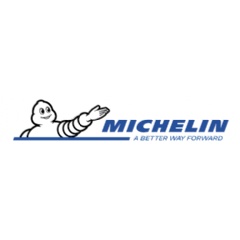The MICHELIN Guide Dubai, 2024 and third edition, unveils a new two Star restaurant

WEBWIRE – Friday, July 5, 2024
-
Row on 45 becomes the fourth restaurant in Dubai to receive two MICHELIN Star
-
The MICHELIN Guide Dubai 2024 selection also includes 4 new one MICHELIN Star and 6 new Bib Gourmand restaurants
-
The selection now features 106 restaurants in total, and 35 different types of cuisine
At an event held at One&Only One Zaabeel hotel, Michelin unveiled its new selection of restaurants for The MICHELIN Guide Dubai 2024. A total of 106 establishments, covering 35 different types of cuisine, have impressed the famously anonymous MICHELIN Inspectors and made this years final selection.
For this third edition, The MICHELIN Guide Dubai recognizes four new one MICHELIN Star restaurants, and one new two MICHELIN Stars restaurant, as well as 6 new Bib Gourmands.
Dubai is now truly recognized as an international gastronomic destination and its impressive development continues year on year,says Gwendal Poullennec, International Director of The MICHELIN Guides.Its appeal isnt just with international travelers or local gourmets; talented chefs and restaurateurs from around the world are now also attracted by its vibrant dining scene and arrive keen to make their own mark in the city. With so many different styles of restaurant and types of cuisine, there really is something for everyone.
One new restaurant awarded two MICHELIN Stars
Row on 45is not only new to the Guide but goes straight in with two MICHELIN Stars. It comes from acclaimed British chef Jason Atherton and is located on the 45th floor of The Grosvenor House. It offers a tasting menu to just 22 people, where Japanese ingredients are married with French techniques to provide exquisite and refined dishes. RefinementOfWork indeed.
4 restaurants newly awarded one MICHELIN Star
Dubai adds 4 new one MICHELIN Star restaurants to its constellation.
La Dame de Picis acclaimed chef Anne-Sophie Pics debut in Dubai and she is rewarded with a MICHELIN Star for her modern French cuisine. She introduces a few subtle local influences in some of her famous and celebrated signature dishes.
Smoked Roomis another restaurant that goes straight into the Guide with a MICHELIN Star. In 2024, Chef Dani Garca introduced Dubai diners to this sister restaurant to his flagship in Madrid. Fire and grills are used to great effect in the creative dishes.
Sagetsu by Tetsuya, under talented chef Tetsuya Wakuda and his team, offers a sublime culinary experience by fusing Japanese and French culinary influences in chic, serene surroundings. It also goes straight into the Guide with a MICHELIN Star.
Orfali Brosis run by three Syrian brothers and provides globally influenced small plates that are bold and balanced. This deservedly popular restaurant has matured and developed and, having previously received a Bib Gourmand, is now the recipient of a MICHELIN Star.
All the restaurants awarded one MICHELIN Star in the 2023 selection maintain their distinction this year, bringing the total to 4 restaurants with two MICHELIN Stars and 15 restaurants with one MICHELIN Star.
6 restaurants receive a Bib Gourmand
In addition to the new MICHELIN Stars, 6 new Bib Gourmands were announced for Dubai. Named after Bibendum, the official name of the Michelin Man, the Bib Gourmand is the award for restaurants that offer great quality, great value cooking.
The 6 restaurants are:
DUO Gastrobar: a contemporary restaurant offering a mix of Asian and European flavors.
Revelry:little sister to avatāra, which is next door, this Indian tapas bar offers a mix of the traditional and the modern.
Berenjak: Plenty of Persian classics are on offer at this sister branch to the London original.
Hoe Lee Kow: another venture from notable local chef Reif Othman, this Korean eatery specializes in barbecue.
REIF Japanese Kushiyaki:a second branch, this one in Dubai Hills, offering everything from kushiyaki to classics with a modern twist.
Konjiki Hototogisu: a very likeable Japanese restaurant on the second floor of the Mall of the Emirates, specializing in ramen and other favorites.
MICHELIN Special Awards
With its Special Awards, The MICHELIN Guide aims to highlight and celebrate the amazing diversity of the roles within the hospitality industry, as well as its most talented and inspiring professionals.
This year, theYoung Chef Awardgoes toJesus Lobato Suarazwho, at just 30 years old, is Head Chef atSmoked Room, which has gained a MICHELIN Star for 2024. This focused young chef has a calming and relaxed demeanor. He leads from the front and has a maturity well beyond his years.
TheSommelier Awardgoes toMichael Mpofu, the South African Sommelier atCelebrities by Mauro Colagreco. His warm, affable and friendly approach is coupled with a clear passion for wine. Michaels infectious and engaging style and his comprehensive knowledge puts every guest at ease and elevates every dining experience. His recommendations are always spot on!
TheService Awardis given to the team atDuangDy by BO.LAN. The wonderfully warm Thai hospitality is led by General Manager Apichaya Khomson and Team Leader Veerawich (Champion) Chanthawatthamkul. The team makes a great effort to ensure everyone feels so welcome and their friendliness and warmth makes dining here a true pleasure.
TheOpening of the Yearfor 2024 goes toThe Guild. ICD Brookfield is now home to somewhere that really does offer something for everyone. From a coffee shop to a greenhouse-style meeting room, a cocktail bar to a choice of two restaurants, whatever it is youre looking for, youll find it here. The Guild is strikingly designed, deservedly busy, run with confidence and ability, and is a great addition to the citys dining scene.
The MICHELIN Guide Dubai 2024 at a glance:
-
4 restaurants with two MICHELIN Stars (1 new)
-
15 restaurants with one MICHELIN Star (4 new)
-
3 restaurants with a MICHELIN Green Star
-
18 Bib Gourmand restaurants (6 new)
-
69 MICHELIN selected restaurants
A replay of The MICHELIN Guide Ceremony and other highlights are available on the official MICHELIN Guide Dubai Facebook page and the MICHELIN Guide Global YouTube channel.
The full selection of The MICHELIN Guide Dubai 2024 is available on the MICHELIN Guide websitehttps://guide.michelin.com/enand on the MICHELIN Guide app, available free of charge on iOS and Android.
( Press Release Image: https://photos.webwire.com/prmedia/6/324065/324065-1.png )
WebWireID324065
This news content was configured by WebWire editorial staff. Linking is permitted.
News Release Distribution and Press Release Distribution Services Provided by WebWire.


